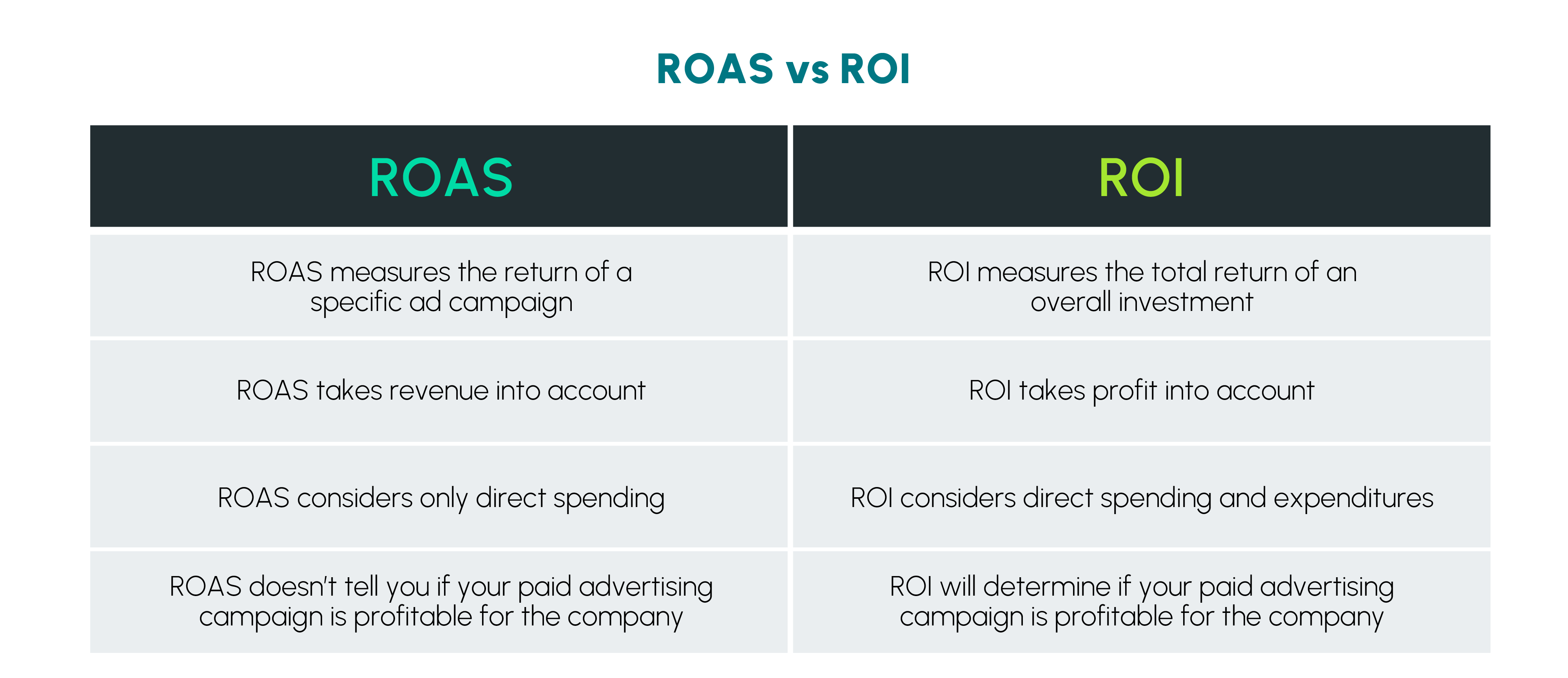
If you are in the mobile advertising business, you will have heard of terms such as ROI and ROAS, which in a nutshell, help marketers measure marketing success. Sometimes these two terms are used interchangeably and are perceived as the same, but there are fundamental differences between them. Before we unpack the differences, let’s shed some light on each term separately.
What is ROI?
ROI stands for return on investment. It is the metric used to measure the yield on a particular investment relative to its cost. In other words, it tells you how much you got back in comparison to what you spent.
ROI shows the overall profitability of the entire marketing investment and takes into consideration other costs such as software licenses, office costs, vendor fees, and staff costs. Put it simply, it tells you whether the campaign was profitable enough to secure the continuation of your business.
So, how to calculate ROI? The formula is simple: divide the profit by the investment cost and multiply this number by 100%.

What is ROAS?
ROAS stands for return on ad spend. It is a metric that shows how much revenue was generated from a specific ad campaign. In other words, it is a metric in percentage representing the revenue gained from each advertising dollar spent.
The importance of ROAS cannot be underestimated. Even if you gain high-quality users through an app marketing campaign that generates revenue for your app, you could still be losing money if you have paid more for the new users than you gained from them.
Wondering how to calculate ROAS? Simply take the revenue from the ad campaign, divide it by the cost of the ad campaign, and multiply this number by 100%.

Why does ROAS matter?
In mobile marketing, user acquisition managers use the ROAS calculation to forecast their marketing efforts to ensure that they are on track. Media Buyers tend to evaluate ROAS by cohort, typically for D3, D7, D14, and D30. By evaluating how the performance tracks for each cohort, marketers can make calculated decisions about which channels or ad formats to invest more in, and which to drop.
The Difference Between ROI and ROAS
When it comes to ROI vs. ROAS, there are some major differences. Firstly, ROI measures the total return of overall investment, whereas ROAS only calculates your return for a specific ad campaign. Essentially, ROI is a bigger picture metric, while ROAS is a metric for measuring the success of a specific ad campaign.
Secondly, ROAS looks at revenue, while ROI considers profit. ROAS is only calculated on advertisement direct spending, but ROI calculations include the total operating expenditure.
And lastly, ROAS tells you if your ad campaign is generating revenue, but it won’t tell you if, at the end of the day, your ad campaign is profitable for the company.
Take a look at the below table for a summary of the differences between ROAS and ROI.

Let’s look at an example of ROAS vs. ROI to see how this works in practice. Imagine your company makes $100,000 in revenue and spends $25,000 on ads. On top of that, the cost of software, personnel, and so on, comes out to $80,000. In this scenario, we calculate ROI and ROAS to establish exactly how effective your campaign is:
ROAS = ($100,000 / $25,000) x 100% = 400%
ROI = (-$5,000 / $105,000) x 100% = -4.76%
where -$5,000 is the profit ($100,000 – $25,000 – $80,000)
and $105,000 is the advertising spend ($25,000 + $80,000)
As you can see, while ROAS provides an extremely positive figure, indicating that the ads are effective, the ROI metric reveals that the overall project is not profitable for the company.
That’s why it’s so important to stay abreast of both ROI and ROAS when you’re running mobile ad campaigns.
3 ways to improve your ROAS (and eventually ROI)
1. Set Benchmarks
Although ROAS has already been used by marketers for quite some time to define the success of their marketing campaigns, there is still no answer to the question “what is good ROAS”. You can consider positive ROAS as good ROAS but eventually, you need to set clear benchmarks based on your app category, your target audience, and past campaigns.
2. Test and Optimize
Another key factor to improving your ROAS is testing. Monitor your strategies, ad creatives, and ad formats to make sure they are delivering the best possible results. Each element should be methodically optimized, across all possible iterations, one by one. At Aarki we do it like this.
3. Re-engage High-Value Users
Invest a healthy amount of your budget in growing existing users’ LTV by re-engaging them. Spot the users who deliver high ROAS and maximize their value by showing them retargeting ads to persuade them to re-purchase.
Bottom Line
When you consider ROI vs. ROAS, it’s important to remember that it isn’t an either/or situation. Both metrics are essential to driving success for your app marketing efforts and for your business. Use ROI to understand long-term profitability and ROAS to optimize a short-term strategy.